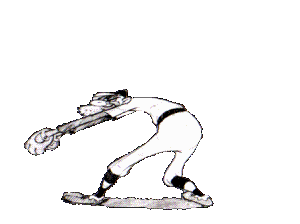|
|
Softball |

|
Monroe Sports Association(baseball/softball) www.monroesports.net
Southwestern Ohio Girls FastPitch Association - www.sogfsa.org (Monroe is a
member of this league)
Little League - www.littleleague.org
News
Girls
How to read ball specs
COR and Compression
defs - http://books.google.com/books?id=Wq5yeipLolUC&pg=PA211&lpg=PA211&dq=baseball+COmpression+explained&source=bl&ots=bD3ZSBciW6&sig=ATSIJ_WPF1Jn1YWog106r5ntuvg&hl=en&ei=4lbnSZ33OdKJtgen6ISbBg&sa=X&oi=book_result&ct=result&resnum=10#PPA202,M1
compression (softball term)
A measure of the pounds of force required
to squeeze a softball 0.25inchs. A softball with a 375-lb. compression
inidicates that the testing facility had to applyr 375 pounds of force to
compress the diameter of the ball by a total of 0.25 inches. A higher value
indicates that the ball will compress less when hit, and bats will have a higher
performance. Reductions in softball compression have a greaer effect than
reductions in the coefficient of restitution in decreasing the overall bat and
ball performance in the field. There is a direct correlation between ball
compression and pitcher-response times: the harder the ball, the less time the
pitcher has to react to the ball.
coefficient of restitution (COR)
The ratio of the velocity of
a baseball or softball rebounding from the surface of a hard, immovable object
to the incoming velocity. It is equal to the square root of the propoertion of
energy dissipated in the collosion. The coefficient of the restitution is a
measure of the liveliness or "bounciness" of the ball: the higher the
coefficient, the livelier the ball. The test sanctioned by the major leagues
involves shooting the baseball from an air cannon at a velocity of 85
feet/second (58 miles/hour) against 2.5inch thick solid northern white ash board
mounted on a concrete column 9.5 feet away; incident and rebound speeds of the
ball are measured with light screens. Specifications stipulate that the baseball
must register on rebound 54.6 percent of the original velocity, plus or minus
3.2 percent (or a coefficient of the restitution between 0.514 and 0.578); in
addition, the ball must hold its shape within 0.08 of an inch after being
subjected to 65 pounds of pressure. Coefficients of restitution for softballs
are commonly 0.44, 0.47, and 0.50.
Expert Mike Molder - taken from - http://en.allexperts.com/q/Softball-2562/Size-balls-1.htm
originally from http://www.softballhitting.com/Articles.asp?ID=132
I will try here to simplify a complex issue. We all know
about the hype surrounding bats and their bannings etc., but what about balls?
It's probably more confusion rather than hype. First whats more important Ball
core or compression? Answer: compression.
CORE is simply the rate at which a
ball will reflect back after being cast against an immovable object. So the
higher the core the higher the reflectivity or the higher the bounce if you
will. Core 47 has a higher bounce than a core 40. But core is not as important
as compression, although if you could choose a core 47 with low compression
(which would be the ultimate mush ball) this would be a good ball for a stiff
walled bat like a stock techzilla to hit for example.
Unfortunately low compression balls (375lbs.) are many times
paired up with 44 and 47 cor. making the ball that much softer. This is why it
is important to separate the two. The compression is much more important and
it's as simple as this : 375lb. comp balls are softer or "compress" more than
525 lb. balls. It takes 525lbs. of pressure per sq.inch to compress a 525lb.
ball 1/4". It takes only 375lbs. of pressure to compress a 375lb. ball 1/4". So
the higher the compression the harder the ball and the harder the ball the
farther it will fly WITH THE RIGHT BAT. What is the right bat? Well lets look at
a bit more.
If you could choose and I know many times you can't unless it's
your own practice, but if you could the ultimate ball for lets say a Miken ultra
or another high flex bat it would be high comp. 525lb.ball with 40 COR as
opposed to 47 COR. Most times though 525's are paired up with 47 COR and most
people think its the core 47 that is allowing the ball to fly farther, but it is
in fact the compression not the core.
Lets look at a low comp ball 375lbs. and a bat with a lot of
flex ie: ultra,rocket tech,synergy,pst,etc., Typically a low comp ball and a bat
with a lot of flex is not a good combo especially over time(time being the more
the ball is hit the mushier it gets). A better pairing is those above named bats
and a hi comp 525lb. ball. Hard ball meets 'soft' bat = long hit.
Simple.
OK, so what would a better bat be for the low comp 375lb.
with core 44 and 47 balls? Something that dosen't flex as much and guess what,
this is how the world record of 530 some feet was broken back in the 70's. A
'hard' bat (no flex) was used with what kind of ball? Answer: more like what the
low comp balls are becoming. Back in the 70's the balls flexed incredibly and
made of a type of 'Surilyn'. The flex on the ball was incredible and rivaled
what a superball is like today. They quickly were outlawed and now the bats of
today are the focus of bannings like the balls were in the 70's.
So now we as players, should find out what comp balls are
being used in our leagues and tournaments so we can match a better bat to the
ball we are using. In fact a better bat now for the low comp balls, which are
becoming more prevelent may in fact be the bats of long ago that didn't flex as
much. What new bats out there now don't flex as much? The original Techzilla
comes to mind immediately. It flex's for the very hard hitter, but for the
average hitter who can't flex it as much, it may be exactly the bat that the Dr.
ordered for these low comp. balls, for even the average hitter.
The New Anderson CK(Composite Killer) line however, is the
company to come out with a bat expressly made for hitting mush balls like no
other. The new Rocket tech CK is a bat that is a must have is you play asa and
hit mush balls. It is rated in the top ten of all bats of ALL TIME already, on
bat review sites and it only hit the market in August of 04! It is the only ASA
bat rated this high.
Now having said all of this what is the real difference in
distance between a low comp and a high comp. ball? My experience has been around
25 ft. or so It may not sound like a lot, but for some it's the difference
between hitting a HR and hitting a long fly out. Also different ball mfg's will
make a difference in performance. There are too many to mention here, but
suffice it to say, some companies put out pure junk while others even though
they are low comp. still may fly pretty good.
You are here: Home-Sports-Softball
Previous Topic: BasketBall Next Topic: Hockey
| 
